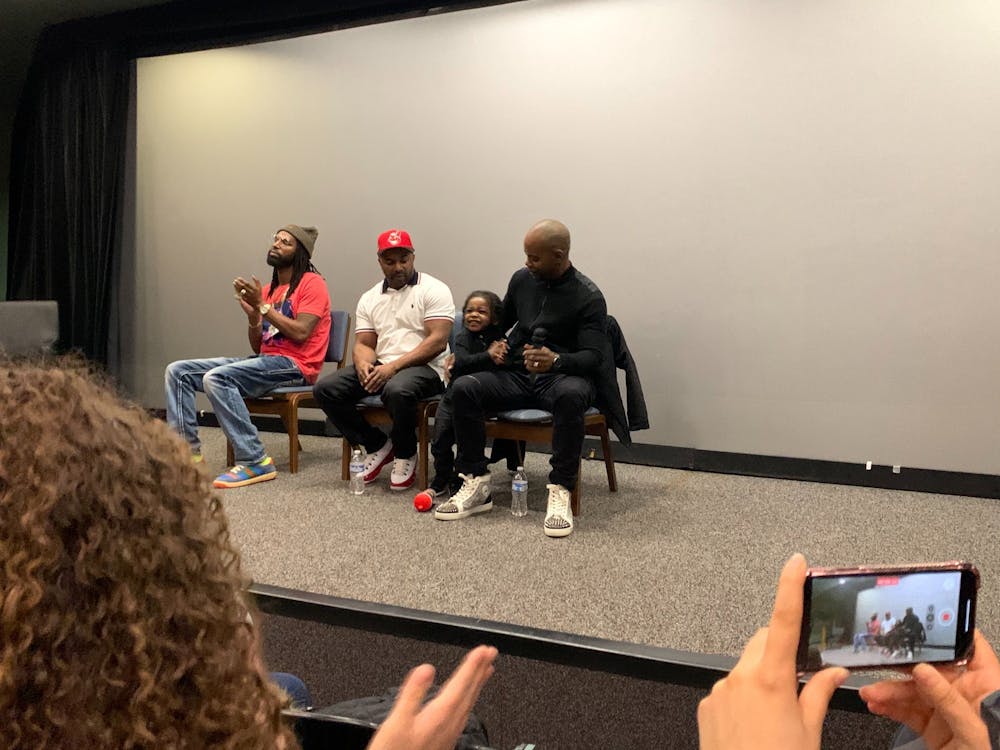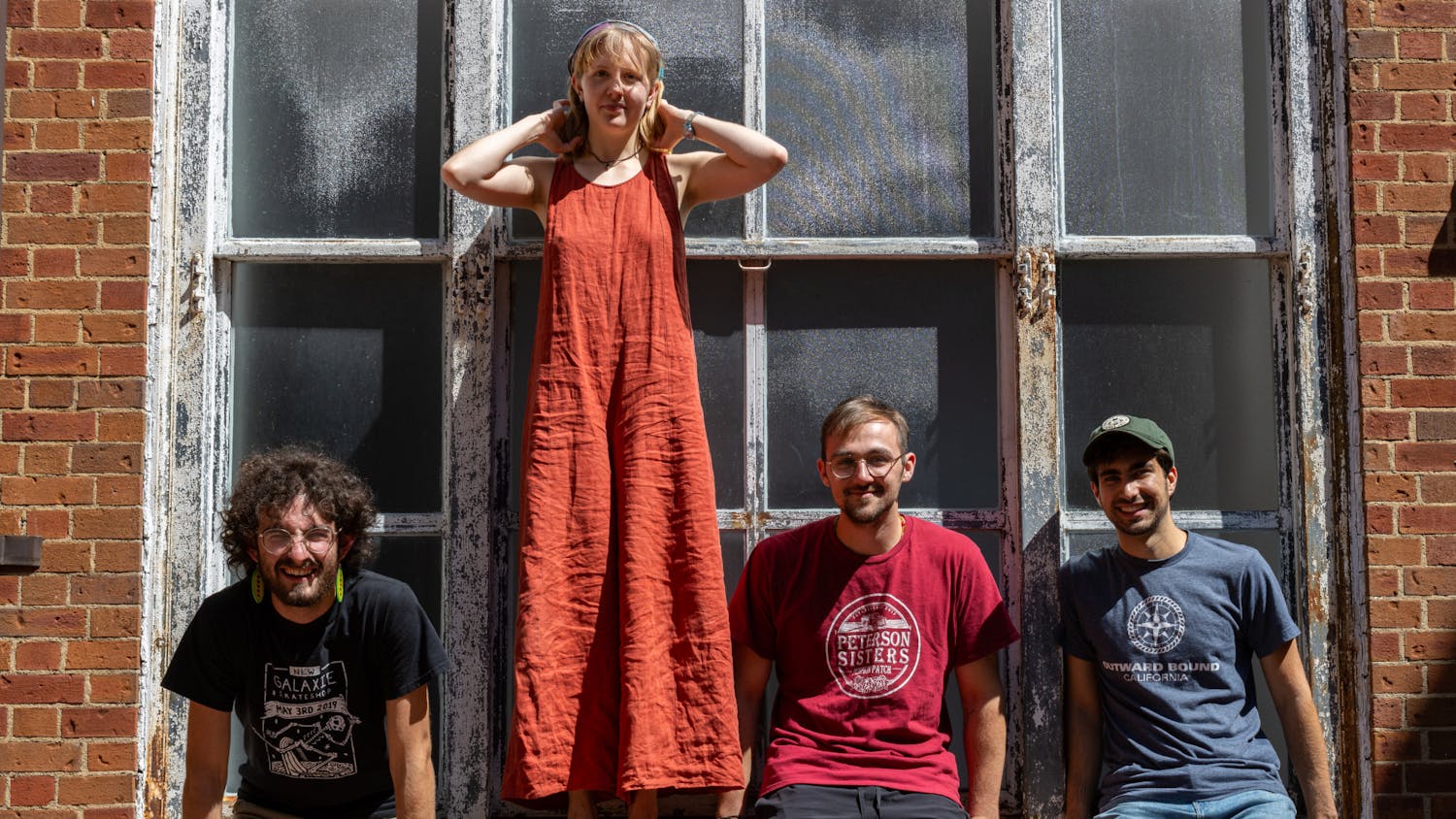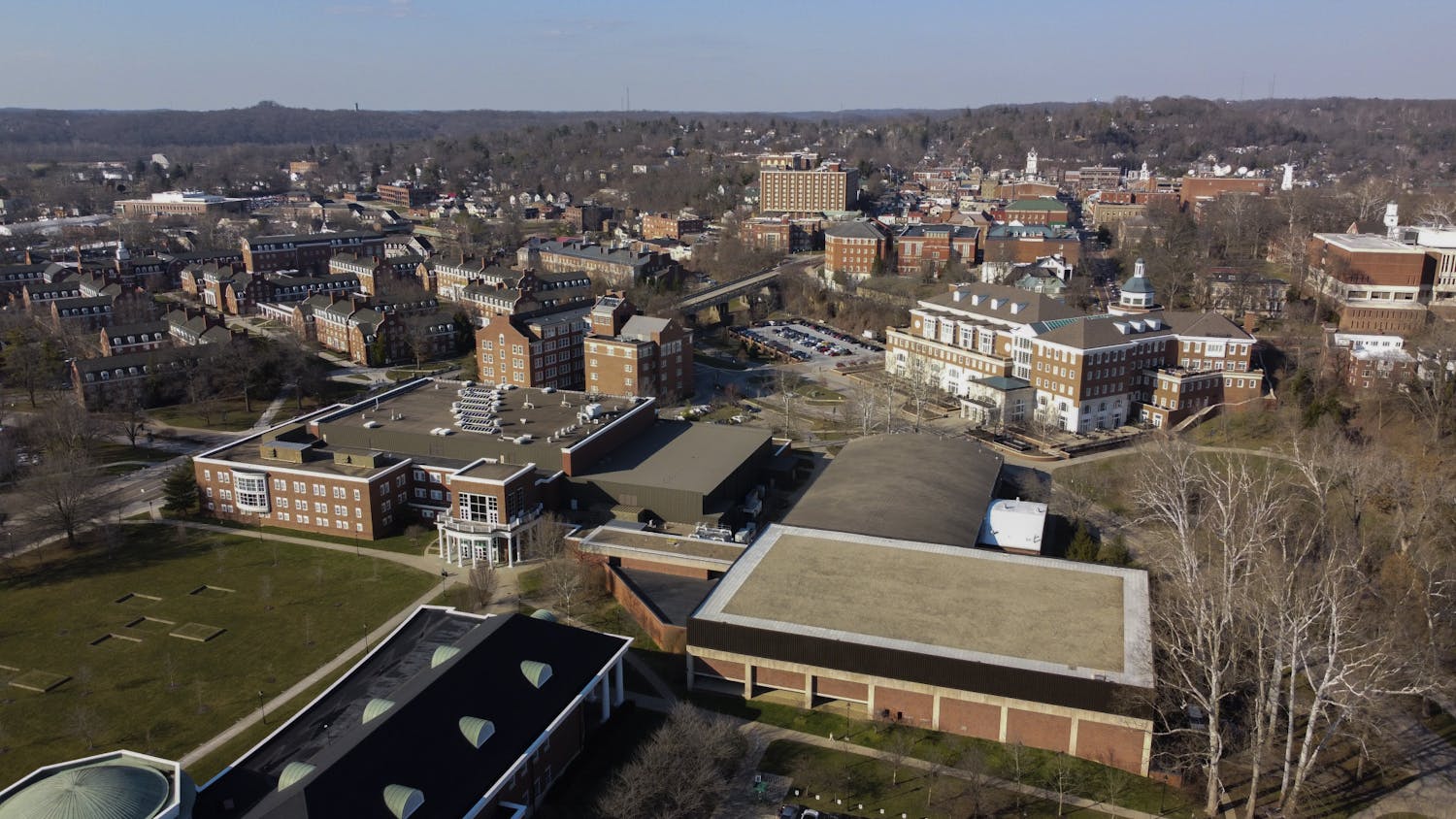145 Athens citizens, Ohio University students and some visitors from Ohio State University went to the Athena Cinema, 20 S Court St., to listen to the East Cleveland Three talk about what it was like to be wrongfully convicted of murder.
Eugene Johnson, Derrick Wheatt and Laurese Glover were convicted in 1995. They spent two decades in jail for a murder that they did not commit when they were 16 and 17 years old.
Pierce Reed, policy coordinator and systems liaison for the Ohio Innocence Project and an OU alumni, spoke about how the Innocence Project helps wrongfully convicted people in Ohio, including the three men that spoke this evening.
First, Reed explained what happened during their conviction more than 20 years ago.
On February 10, 1995, Johnson, Wheatt and Glover were driving around east Cleveland when they saw a man get shot and killed. There were a few witnesses to this scene including a 14-year old girl. The three boys fled the scene and instead the witnesses saw a car fleeing.
When Johnson was dropped off at home, Wheatt and Glover were driving home when police cars pulled up to their home and arrested the two boys without telling them what were being arrested for. The next day Johnson was called to the police station to talk to Wheatt and Glover and was then arrested after saying that he had seen the shooting as well.
“[The police] asked [my mother] if she would like to say anything to me before she goes,” Glover said. “I was like, where she goes? Where she goes I’m going. They said, no you’re going downtown. You’re being charged with murder. My heart just dropped to my stomach. I had no understanding of how I could just witness something, and then be at the police station being asked about it and then being charged. It made no sense.”
The prosecutor’s argument was all based on the 14-year old girl, Tamika Harris, and her recollection of what happened that night.
“If someone approaches you with a weapon, you are biologically wired to focus on that weapon,” Reed said. “It’s part of your fight or flight instincts. So if someone is pointing the gun at your face, you’re going to see the gun. You’ll know that there is a person behind the weapon, and you’re going to try your best but you probably aren’t going to get it right.”
Harris spoke with the police and said that she did not have her glasses on so she did not get a good look at the shooter, and stuck to this for a long time. Instead of asking Harris any questions about what the shooter looked like, the police had the three boys, Johnson, Wheatt and Glover, and asked her which of the boys shot the man. Harris said that it was Johnson because his clothes seemed to be the most similar to what the shooter was wearing.
The three boys’ hands were tested for gunpowder, and the test came up positive. A study was later done where there were people that had not been near a shooting and they were put in the back of police cars to drive around. Following the ride, they were all tested to see if they had gunpowder remnants and one out of three people did. This case file was then packed up and put away, however it was not destroyed.
This could have proven that Johnson, and the rest of the boys, did not shoot the man.
The Brady Rule, coming from the case of Brady v. Maryland, states the prosecution must turn over all evidence that may exonerate the defendant. The Ohio Innocence Project used the Brady Rule to help their case in getting the men exonerated.
Twenty years after the three men had been wrongfully convicted, they were each awarded $5 million, including about $50,000 a year for every year they were that they were wrongfully convicted due to the Brady Rule.
“Looking back, the whole trial was a kangaroo court,” said
The audience was interested in what the three men had to say and asked questions including what their healing process was like after getting exonerated, what happened to the man who actually committed the murder and how they maintained hope while in jail.
At the end of the night, Johnson and Glover had their girlfriends come up on stage and Wheatt had his wife and 3-year old son, Derrick Jr., come up as well. The audience was given glow sticks to make a rainbow. While in prison, all three men held onto their faith and read the bible for signs, including the rainbow. The audience also sang a song for the men and their families about hope.
The Ohio Innocence Project is affiliated with the University of Cincinnati. It has a team of five lawyers, one paralegal, and one assistant working for it. In Ohio, there have been 28 men and women that have been released from prison after having been wrongfully convicted through the Innocence Project, since 2003. Together, those people served 525 year in prison, Reed said.
“Most often wrongful convictions occur because we’re human. We make mistakes. And like all humans who make mistakes, we don’t like to admit it,” Reed said.






